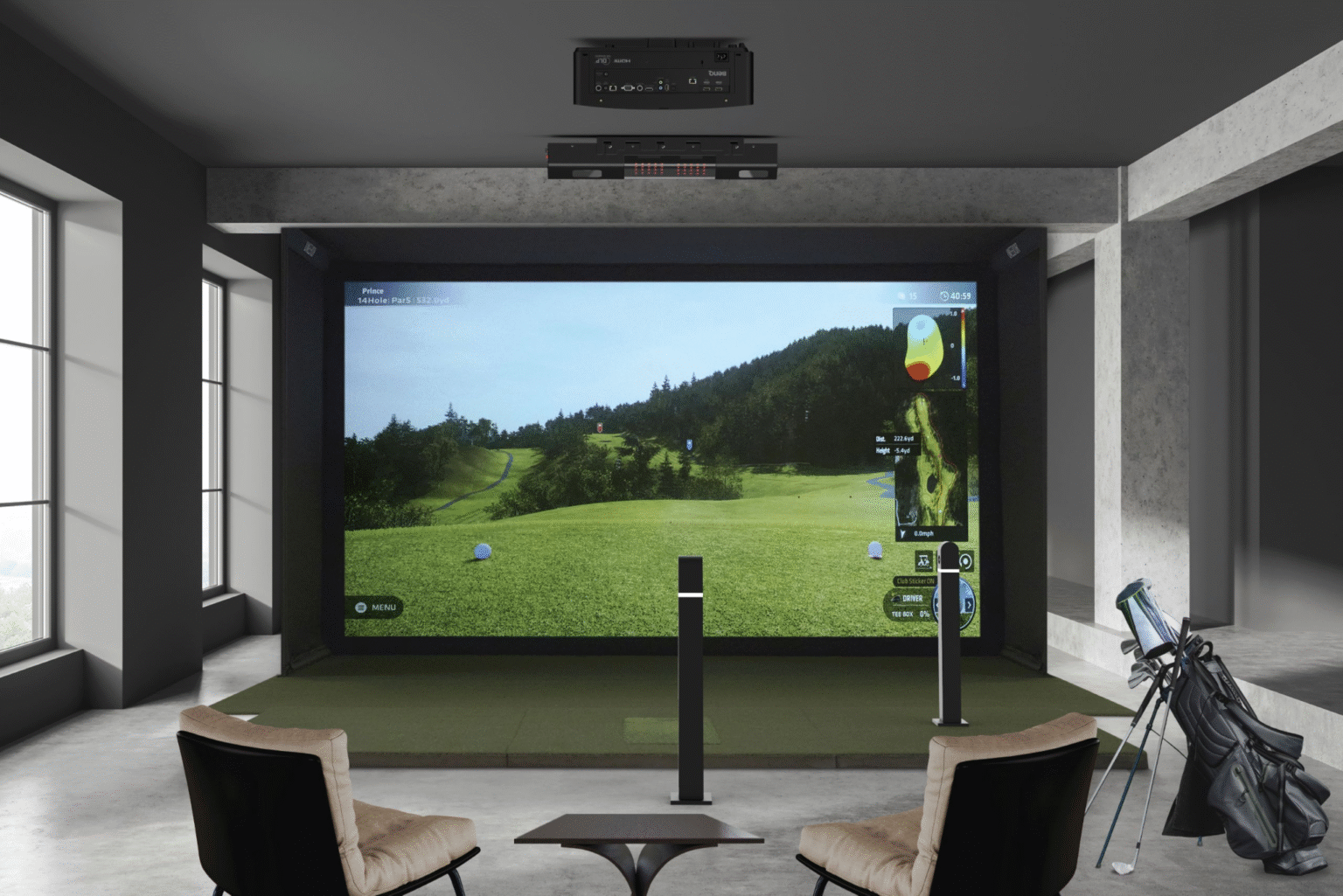In 2025, one of the fastest-growing segments in the golf world isn’t a new driver or training aid — it’s golf simulators. As technology has advanced and prices have become more accessible, golf enthusiasts are bringing the game home like never before. Whether you’re looking to sharpen your skills, compete virtually, or simply enjoy playing world-class courses from your garage, investing in a simulator has become a smart move for modern golfers.
But with so many choices on the market, knowing what to look for before making that investment is essential.
Why Golf Simulators Are in High Demand in 2025?
A Perfect Fit for Modern Lifestyles
Busy schedules, unpredictable weather, and the rising cost of club memberships have all driven interest in home-based golf solutions.
Simulators offer the freedom to practice anytime, without leaving your home — making them the ideal training and entertainment solution for today’s golfer.
Advancements in Realism and Performance
Modern simulators now feature ultra-realistic graphics, pinpoint swing tracking, and AI-driven feedback tools.
These advancements mean the at-home golf experience closely mimics the course, both in feel and in feedback — a major leap from earlier versions.
What to Look for in a Golf Simulator Before You Buy?
1. Accurate and Reliable Tracking Technology
At the heart of every simulator is its ability to track your swing and ball flight.
When searching for a golf simulator for sale, prioritize systems that offer high-speed cameras, radar, or infrared tracking — such as those used by brands like TrackMan, SkyTrak, or GCQuad — to ensure dependable, tour-level data accuracy.
2. Realistic Visual Experience
Golf is as much about visuals as it is about feel.
A good simulator should feature high-resolution graphics, true-to-life course modeling, and responsive ball behavior. Look for setups that offer 4K projection and well-designed hitting screens to maximize immersion.
3. Course and Game Variety
More than just a practice tool, simulators have evolved into full entertainment systems.
Choose one with a broad library of famous courses, multiplayer support, skill challenges, and training modes to keep your sessions engaging and fun — whether you’re practicing solo or playing with friends.
Matching Your Budget and Space to the Right System
Entry-Level Setups (Under $5,000)
Ideal for beginners or casual players, these systems often include a basic launch monitor, net, and software.
While they may lack high-end visuals, they still offer valuable swing data and are easy to install in garages or spare rooms.
Mid-Range Simulators ($5,000–$15,000)
These systems typically include an enclosure, impact screen, projector, and more accurate launch monitors.
They strike a great balance between performance and price, making them popular for intermediate and serious golfers.
Premium and Professional Systems ($15,000+)
Designed for luxury home setups or commercial use, these simulators deliver the highest level of detail, customization, and realism.
Expect complete enclosures, premium turf, dual-tracking technology, and access to an extensive course library.
Key Software Features to Consider
Real-Time Swing Analysis
Look for software that offers instant feedback on clubhead speed, face angle, path, and impact location.
This is crucial for diagnosing swing flaws and tracking improvement over time.
Online Tournaments and Remote Coaching
Many simulators now include features for connecting with coaches or participating in online competitions.
This adds a social and competitive dimension to your setup and helps keep you motivated year-round.
Update Support and Add-Ons
The best systems offer regular updates and optional add-ons, like putting modules, short game enhancements, or even virtual reality integration.
Make sure your chosen simulator has a roadmap for future improvements and expansion.
Additional Tips Before Making Your Purchase
Research Reviews and Brand Reputations
Not all simulators are created equal. Read verified customer reviews, compare technical specs, and check the reputation of the brand before committing.
Look for transparency in data claims and long-term product support.
Confirm Return Policies and Warranty Options
A simulator is a big investment.
Make sure the seller offers a solid return policy and warranty coverage to protect your purchase in case of defects or installation issues.
Final Thoughts
As the 2025 golf simulator boom continues, it’s clear that this technology is more than just a trend — it’s a lasting shift in how the game is practiced and enjoyed. Choosing the right system means balancing your goals, space, and budget with performance and long-term flexibility. With a thoughtful approach, the right simulator can become your most valuable training partner and a year-round source of fun and improvement.
Want more insights? Keep visiting Lotology for the latest updates and information!

